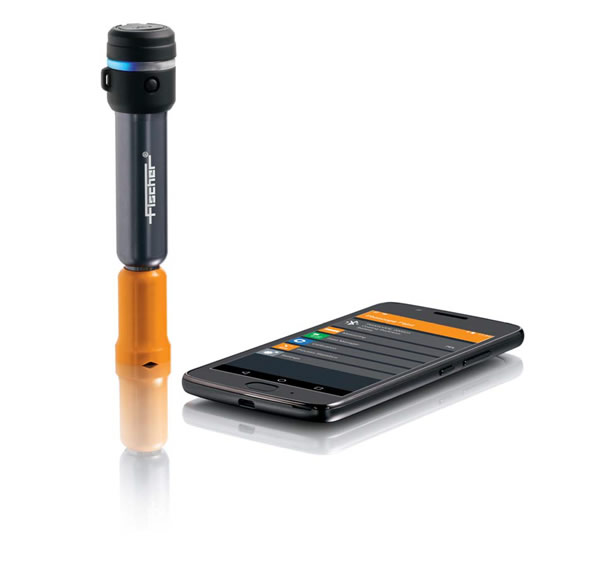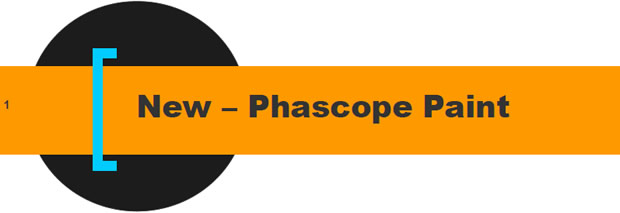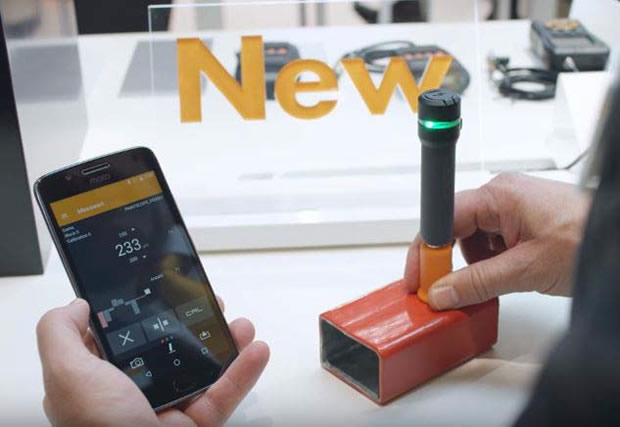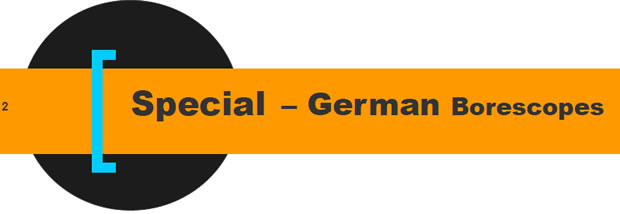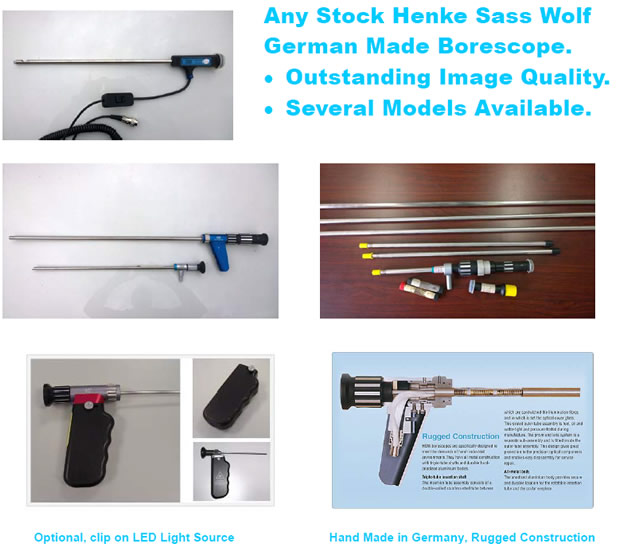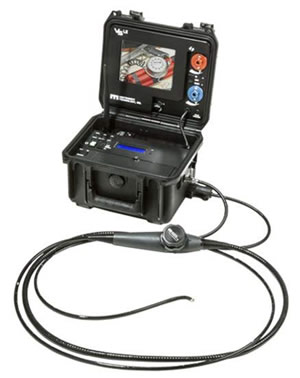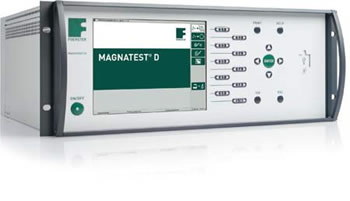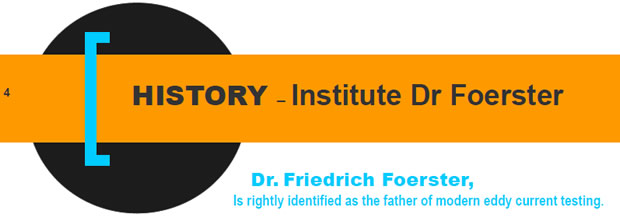
In This Issue: 1. New – New Instrument: Mobile Phone Thickness Gauge
PHASCOPE® PAINTThe PHASCOPE PAINT by Helmut Fischer is a probe in pen design. Measure non-destructively the coating The measurements with the PHASCOPE PAINT conform to standards;
PHASCOPE PAINT; Like more Information – 02 8850 3755
30% OFFWhilst Stocks Last 30% of any Stock Henke Sass Wolf Borescope until March 2018 Like more Information – 02 8850 3755
Probe, 2M, 3M, 4.5M or 6M, Field-of-View 80°, Depth-of-Focus 1/2” to Infinity, Angle of Articulation ± 130° U/D and ± 120° L/R, Integral White, IR, and Blue Light Source, Pelican Transport Case. The V5LE is also easy to operate, featuring an intuitive touch screen menu for the digital documentation system, easily capturing video and still images for training and evidence. OPTIONAL: 6mm x 6M High Resolution NEAR FOCUS Head —————————————————————————————— Institute Dr Foerster introduce their NEW model; MAGNATEST® D. FOERSTER’s MAGNATEST D guarantees magnetic inductive testing on the highest level: the system performs material property testing fully automatically. Doing this in the single coil absolute operation makes a comparator coil unnecessary. Even the smallest structure discrepancies can be made visible through the combination of high excitation currents with complex evaluation electronics.
Like more information– 02 8850 3755
Friedrich Foerster – 1908 ~ 1999. The introduction by Foerster of sophisticated, stable quantitative test equipment and practical methods for analysis of quantitative test signals on the complex plane were by far the most important factors contributing to the rapid development and acceptance of electromagnetic induction and eddy current tests during the 50’s & 60’s in the US. Foerster is rightly identified as the father of modern eddy current testing, also Receiving Victor deForest Award 1957. His experience before World War II included advanced university education in Physics and a significant introduction in German research institutes to electromagnetic measurements related to the metallurgy and structure of steels and nonferrous metals. During World War II his knowledge was used in naval warfare, particularly with respect to magnetic mines. At the conclusion of the war, after a period of imprisonment by the French, Foerster retrieved his technical reports and, “with the aid of a screw driver and a technician” began further development of electromagnetic test instruments in the upper story of an old inn just a few miles from Reutlingen, the place where he later established the Institute Dr Foerster. For his Probe received the Highest NASA award. By 1950, he had also developed a precise theory for many basic types of eddy current tests, including both absolute and differential or comparator test systems and probe or fork coil systems used with thin sheets and extended surfaces. Painstaking calibration tests were made with these coil system and with mercury models (in which defects could be simulated by insertion of small pieces of insulators). Each test was confirmed by the precise application of Maxwell’s differential equations for the various boundary conditions involved with coils and test objects, at least for symmetrical cases such as round bars, tubes and flat sheets where such mathematical integrations were feasible. Further studies were made of the nonlinear response characteristics of Ferro magnetic test objects. Methods using very low test frequencies (5Hz), harmonic signal analysis, comparators at various levels of magnetization, and precise bridge circuits were developed. In most instances, Foerster replaced measurements of the inductance or impedance of test magnetizing coils with the more precise technique of measuring response with unloaded secondary coils coupled to the test materials (the secondary coils coupling with the test material is almost identical to that of the magnetizing coils) The extent and depth of the scientific studies were not matched by any US laboratory, either government sponsored or operated independently. By extensive publications (not initially in the form of US patents, but in open literature), Foerster made the results of this research available to the world of technical personnel. His contribution of almost the entire theory and technology of electromagnetic induction and eddy current test techniques to the first edition of ASNT’s Non-destructive Testing Handbook provided the means for educating thousands of other NDT personnel in the theory, methods, equipment and interpretation of eddy current tests. This integrated presentation was then used throughout the world to up date eddy current test technology. The unique developments in Foerster’s new laboratory in Reutlingen , Federal Republic of Germany . were made known in the United States not only by those capable of reading his publications (in German) before 1950, but also by missions in which American personnel were sent to Foerster’s laboratory for education and experience with these new forms of test instrumentation. Richard Hochschild, for example made a visit of perhaps six months in Reutlingen. Upon his return, he prepared summary reports which were distributed by the Atomic Energy Commission sponsors of his visit. In the United States, numerous facilities began research to test these new concepts and instrumentation, including significant efforts at Oak Ridge, Hanford and other facilities. The creative work of Hugo Libby at Hanford, WA, during the past 30 years and that Robert Oliver, Robert McClung, Caius V, Dodd J. A Deeds and others at Oak Ridge TN, were probably sponsored in response to Foerster’s original work. Even more significant has been the complete transfer of Foerster’s advanced technology to enterprising American firms manufacturing and distributing NDT equipment since 1952. Foerster made his first presentation before an ASNT audience early in the 1950’s after learning aboard ship about five words of English; “Sonny Bob” and “I Love You”. His first personal presentation in the United States was followed by meetings with management at the Magnaflux Corporation, in which the present author served as a technical advisor, explaining Foerster’s designs and discussions. Agreements for licensing under Foerster patents were later concluded, and the basic Foerster instruments were Americanised by the U.S Components and electron tubes by the NDT staff at Battelle Memorial Institute in Columbus, OH. During the next few years, increasing amounts of Foerster’s technology were transferred to Magnaflux, whose staff under Glenn L. McClurg became qualified in design and production of Foerster’s various instruments and then marketed these electromagnetic induction test systems throughout the United States. The collaboration between Foerster and Magnaflux lasted perhaps ten years, during which rapid progress was made in both the German laboratory and in the United States. Upon termination in the 1960’s of the arrangement with Magnaflux, Forester marketed his instruments through the Foerster-Hoover organisation in Ann Arbor.MI, Rudy Hentschel, who was trained in Reutlingen at Institute Dr Foerster, transferred information to this new organization. After a few years, the licensing of Foerster’s instruments to Automation Industries, Inc, resulted in further transfer of technology and marketing throughout a new organization. A later arrangement with Krautkramer Branson repeated the unique educational process. Since 1948, the name FOERSTER has been synonymous with quality and precision. We develop and produce units and systems for the non-destructive testing of metallic materials, metal detection, and magnetic’s. We operate globally and always in close proximity to our customers thanks to our sales and service network of 10 subsidiaries and qualified representations in over 60 countries. We are a technological leader and act as a competent system partner and solution provider for our customers. We make quality visible. The Origins of Electromagnetic Testing, by Robert C. McMaster For more information on the MP0R-FP series, please contact KK&S INSTRUMENTS Have any questions or like further details?; Ph 02 88503755 or Email
|
The Best in Quality Service and Products for Non destructive testing



